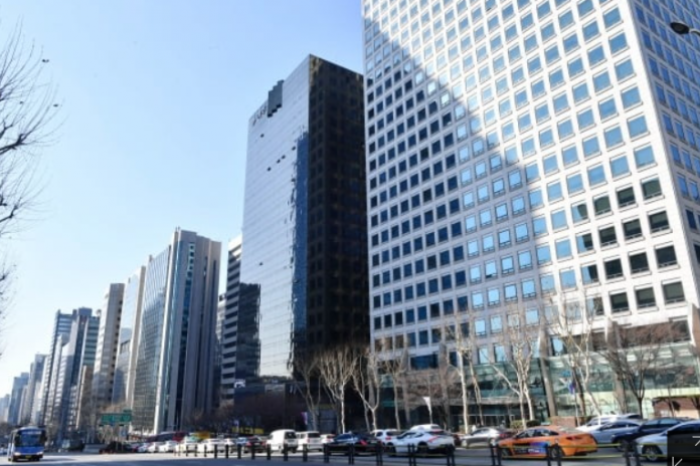Real estate
Offices in Gangnam attract global investors amid market volatility
Rents of smaller offices in Gangnam have jumped 40-50% as businesses aim to settle in the district or expand their current offices
By Mar 14, 2022 (Gmt+09:00)
2
Min read
Most Read
LG Chem to sell water filter business to Glenwood PE for $692 million


Kyobo Life poised to buy Japan’s SBI Group-owned savings bank


KT&G eyes overseas M&A after rejecting activist fund's offer


StockX in merger talks with Naver’s online reseller Kream


Mirae Asset to be named Korea Post’s core real estate fund operator



The rents of small and mid-sized office buildings in downtown Gangnam jumped by 40-50% this year, according to Korean investment banking sources on March 14. Demand is rising as a number of companies aim to settle downtown, and the Gangnam-based information technology firms and gaming developers want to expand their office space.
“Rents for Gangnam-based offices per base Korean unit area pyeong, or 3.3 square meters, have recently surged from the mid-2 million won level ($1,613.9) to over 3 million won, and demand is still high,” an asset manager source said. “The firms planning to expand offices want to use the entire two or three stories of a building. However, many of them work from a few different buildings or even move out of Gangnam due to the limited supply,” the source added.
For buildings based in the Gangnam and neighboring Seocho districts with more than 33,000 square meters of floor area, the vacancy rate fell to 0.6% in the fourth quarter of 2021 from 1.6% in the previous quarter, according to real estate firm Cushman & Wakefield’s February report. The recent figures are lower than the natural vacancy rate, 2-3% due to office movement, meaning there are few vacant office buildings in the downtown areas.
As office prices are getting higher, the capitalization rate of some properties has slid to around early 3% and late 2%. Hopeful Korean and overseas investors are turning back to Gangnam-based offices, expecting continuously soaring rent, decreasing vacancies and cap rate recovery.
“Gangnam-based offices top overseas investors’ demand for Korean commercial real estate,” another asset manager source said. “Many of them look for small and mid-sized offices and old properties available for remodeling to employ a value-add strategy. This boosts competition for acquiring smaller properties in the district,” the source added.
The heated market affects around 20 shared offices in the center of Gangnam. The shared office companies, which sub-lease the coworking area after renting the space from the property owners, are raising their new contract prices by 30 to 40%.
“Most of the coworking spaces settled in Gangnam when the vacancy rate was around 10%, and now owners see a higher profitability from the rental properties,” a shared office industry source said. “The shared office firms may see increased rent if they have to renew contracts with the property owners soon,” the source added.
Amid fiercer competition to rent new offices, some property owners will likely choose corporate tenants over shared office firms, another source said. “Shared offices make building management more complex as they have multiple space users. Therefore, building owners prefer to lease spaces to corporates rather than coworking space firms,” the source added.
Write to A-young Yoon at youngmoney@hankyung.com
Jihyun Kim edited this article.
More to Read
-
 Artificial intelligenceOffice deals in Seoul hit record-high $14 bn in 2021: JLL
Artificial intelligenceOffice deals in Seoul hit record-high $14 bn in 2021: JLLFeb 03, 2022 (Gmt+09:00)
3 Min read -
 Artificial intelligencePangyo, Bundang among Asia's hot office areas, DWS says
Artificial intelligencePangyo, Bundang among Asia's hot office areas, DWS saysDec 20, 2021 (Gmt+09:00)
2 Min read -
 Artificial intelligenceOffice investment falls 15% in Q3 2021, CBRE says
Artificial intelligenceOffice investment falls 15% in Q3 2021, CBRE saysOct 26, 2021 (Gmt+09:00)
2 Min read -
 Artificial intelligenceSeoul Q2 office prices rise at fastest rate in 10 yrs
Artificial intelligenceSeoul Q2 office prices rise at fastest rate in 10 yrsSep 11, 2021 (Gmt+09:00)
3 Min read
Comment 0
LOG IN


